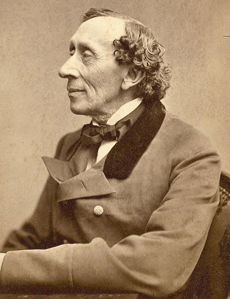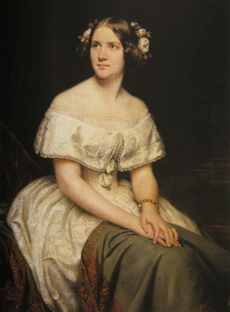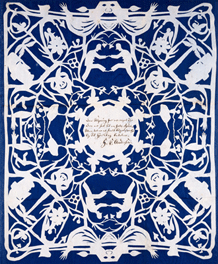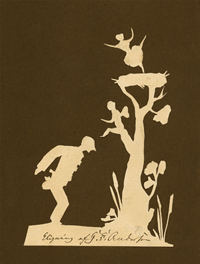|
Hans Christian Anderson
Answer
to Name
This Famous Person Game - February 2016
by Mike McLeod
|
 |
While Hans Christian Anderson is known around the world for his fairy tales—and well he should be since they are some of the greatest ever written—he was also a writer of novels, plays, poetry and travelogues. In a time before television, movies, radio and the Internet, Hans Christian Anderson, or “H.C. Anderson” as he is known in his native Denmark, traveled outside his home country at least 29 times over almost a decade. For fans of PBS, his travelogues of foreign countries made him the Rick Steves of the 19th century. He wrote about Sweden, Switzerland, Spain, Portugal, England, Greece, France, Italy Morocco, Turkey and other faraway places.1 While the Danes were seafarers, most never left their home country, so H.C. Anderson’s writings served to help slake their thirst for knowledge about other lands.
“To move, to breathe, to fly, to float, To gain all while you give,
To roam the roads of lands remote, to travel is to live.”
–The Fairy Tale of My Life: An Autobiography
Hans Christian was born on April 2, 1805 in Odense, Denmark, to Hans and Anne Marie Andersdatter. His father was a shoemaker, and his mother was a washerwoman. The family was poor and so was H.C.’s his initial education. He left home while a young starry-eyed teenager to become a famous actor in a theater in Copenhagen. At this and other roles in the theater, he failed. However, he was looked on kindly by a benefactor who sent him for more schooling.
Although that did not go well, H.C. did find his guiding star in life to follow, which was writing. During his lifetime, he eventually wrote three autobiographies. Ironically, his early novels, O.T. and Only a Fiddler brought him notoriety, but his fairy tales did not bring acclaim in his own country until after they were well received abroad.
“The whole world is a series of miracles, but we're so used to them we call them ordinary things.”
His other writings and many fairy tales eventually gave H.C. financial security, and later on, they brought great wealth to the Walt Disney Company. Frozen, which used H.C.’s The Snow Queen as a starting point, made $1.3 billion in ticket sales and another billion in merchandise. It is the highest grossing animated movie of all time, beating out Toy Story 3 at $1 billion. Disney also profited well from H.C.’s The Ugly Duckling and The Little Mermaid (released in 1989, grossing $111 million). Warner Bros. made his Thumbelina into a movie. The Princess and The Pea was also movie-ized. In all, Hans Christian Anderson wrote 212 fairy tales and stories, including The Emperor’s New Clothes and The Little Match Girl.
|

Hans Christian Anderson

Jenny Lind, the opera singer that H.C. Anderson loved.
|
“Life itself is the most wonderful fairy tale.”
H.C. never married, but he was in love several times, usually to the unattainable. One love of his life was Jenny Lind, the famous Swedish opera singer. H.C. is believed to have written the fairy tale The Nightingale for her, and she became known as “The Swedish Nightingale.” Despite this, Jenny Lind wanted only a platonic relationship with H.C.
“Where words fail, music speaks.”
H.C. met and was friends with Rudyard Kipling and Charles Dickens, his hero, as well as the Brothers Grimm, Victor Hugo, Alexander Dumas, and composer Franz Liszt.
In addition to writing, H.C. was also a talented paper-cut artist, using large scissors to cut various intricate designs out of paper. This he did while telling a fairy tale, both to entertain children and adults alike. In 2011, one of his original paper cuts with angels, ballerinas, swans and dancing clowns was sold in Copenhagen for about $40,700. On it, he wrote:
This paper cut is somewhat expensive
the price is half a "Rigsdaler"
But it is a whole cut fairy tale
It will pay your kind heart.
|

|

|
|
This Hans Christian Anderson paper cut features people, faces, flowers, angels and foliage. It sold for about $40,700 and measured about 13 x 16 inches.
|
This papercut has a man looking at a tree with an angel and a ballerina on it.
|
In Dutch, this rhymes. A rigsdaler was an old bank note that was replaced in 1813 after a financial crisis; therefore, it probably wasn’t worth much.
Hans Christian Anderson died on August 4, 1875. He suffered from liver cancer. Today, there are several statues to him around the world, including the famous Little Mermaid statue in Copenhagen.
“Enjoy life. There's plenty of time to be dead.”
Ted Carlton of Utah and Scott and Carolyn Brown of Memories Flea An'Tique Mall in Prattville, Ala., correctly identified Hans Christian Anderson.
--------------------------
Credits:
The Hans Christian Anderson Center, http://andersen.sdu.dk.
Goodreads.com for quotations.
1 Ludvig Holberg--a European Writer: A Study in Influence and Reception, edited by Sven Hakon Rossel, p.3.
Learn
about more Famous People
|